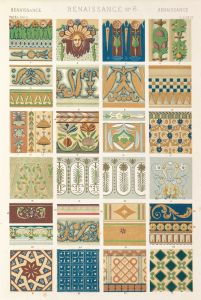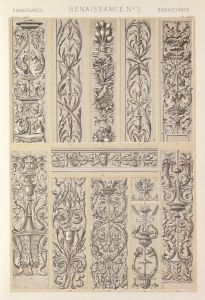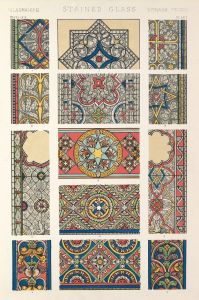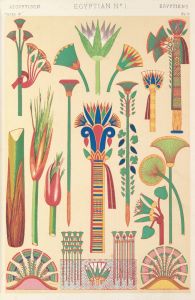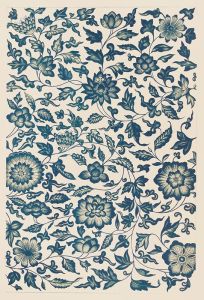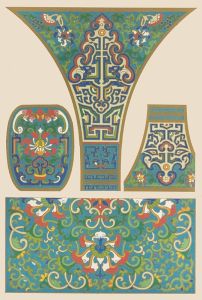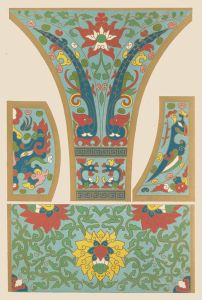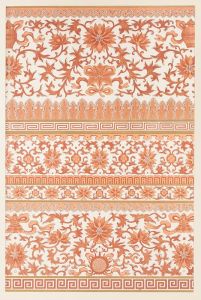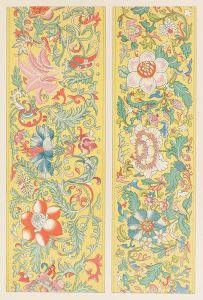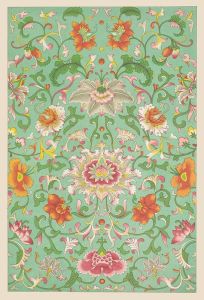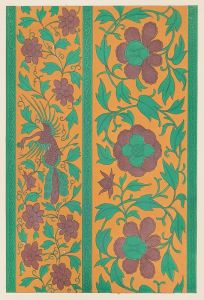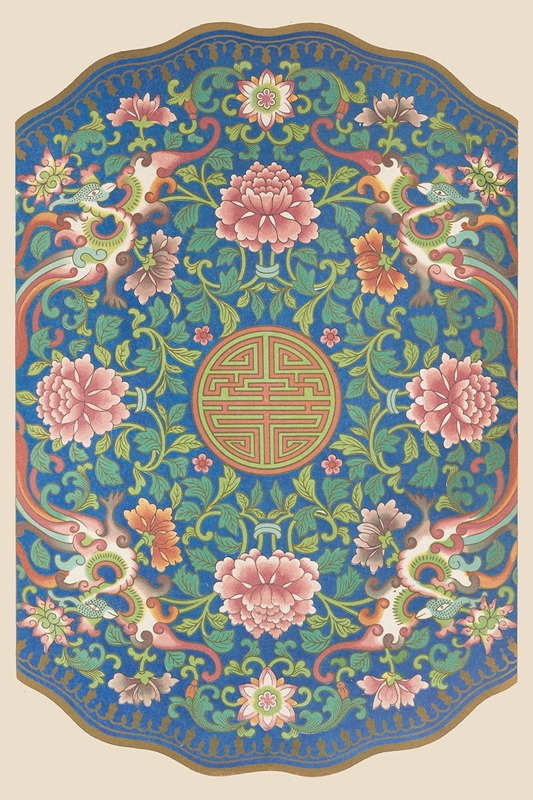
Examples of Chinese ornament, Pl.76
A hand-painted replica of Owen Jones’s masterpiece Examples of Chinese ornament, Pl.76, meticulously crafted by professional artists to capture the true essence of the original. Each piece is created with museum-quality canvas and rare mineral pigments, carefully painted by experienced artists with delicate brushstrokes and rich, layered colors to perfectly recreate the texture of the original artwork. Unlike machine-printed reproductions, this hand-painted version brings the painting to life, infused with the artist’s emotions and skill in every stroke. Whether for personal collection or home decoration, it instantly elevates the artistic atmosphere of any space.
"Examples of Chinese Ornament, Pl.76" is a plate from the influential design book "The Grammar of Ornament," authored by Owen Jones and first published in 1856. Owen Jones was a British architect and designer known for his pioneering work in color theory and ornamental design. His book, "The Grammar of Ornament," is a comprehensive collection of design patterns and motifs from various cultures around the world, intended to serve as a source of inspiration for designers and architects.
Plate 76 specifically focuses on Chinese ornamentation, showcasing the intricate and symbolic designs characteristic of Chinese art. Jones's work was part of a broader 19th-century interest in the arts and crafts of non-Western cultures, which were often romanticized and idealized by European artists and designers. This interest was partly fueled by increased global exploration and trade, which brought a wider awareness of different artistic traditions to Europe.
The Chinese ornaments depicted in Plate 76 are likely drawn from a variety of sources, including textiles, ceramics, and architectural elements. Chinese design is known for its use of symbolic motifs, such as dragons, phoenixes, and floral patterns, each carrying specific meanings and associations. These motifs are often rendered in vibrant colors and intricate patterns, reflecting the high level of craftsmanship in Chinese decorative arts.
Jones's presentation of Chinese ornamentation in "The Grammar of Ornament" was intended to highlight the beauty and complexity of these designs, as well as to provide a resource for Western designers seeking inspiration from non-Western sources. His work contributed to the popularization of "Chinoiserie" in Western design, a style that incorporates Chinese artistic influences into European decorative arts.
"The Grammar of Ornament" itself is organized into 37 chapters, each dedicated to a different culture or style, with Chinese ornamentation being one of them. Jones's approach was methodical and scholarly, aiming to document and categorize the vast array of ornamental styles he encountered. His work is notable for its emphasis on the importance of understanding and respecting the original cultural context of the designs, even as they were adapted for use in Western art and architecture.
Owen Jones's contributions to design theory and his appreciation for global artistic traditions have left a lasting impact on the field of design. His work continues to be studied and admired for its aesthetic value and its role in promoting cross-cultural appreciation and understanding in the arts. "Examples of Chinese Ornament, Pl.76" remains a testament to the rich visual language of Chinese decorative arts and its influence on the broader world of design.





